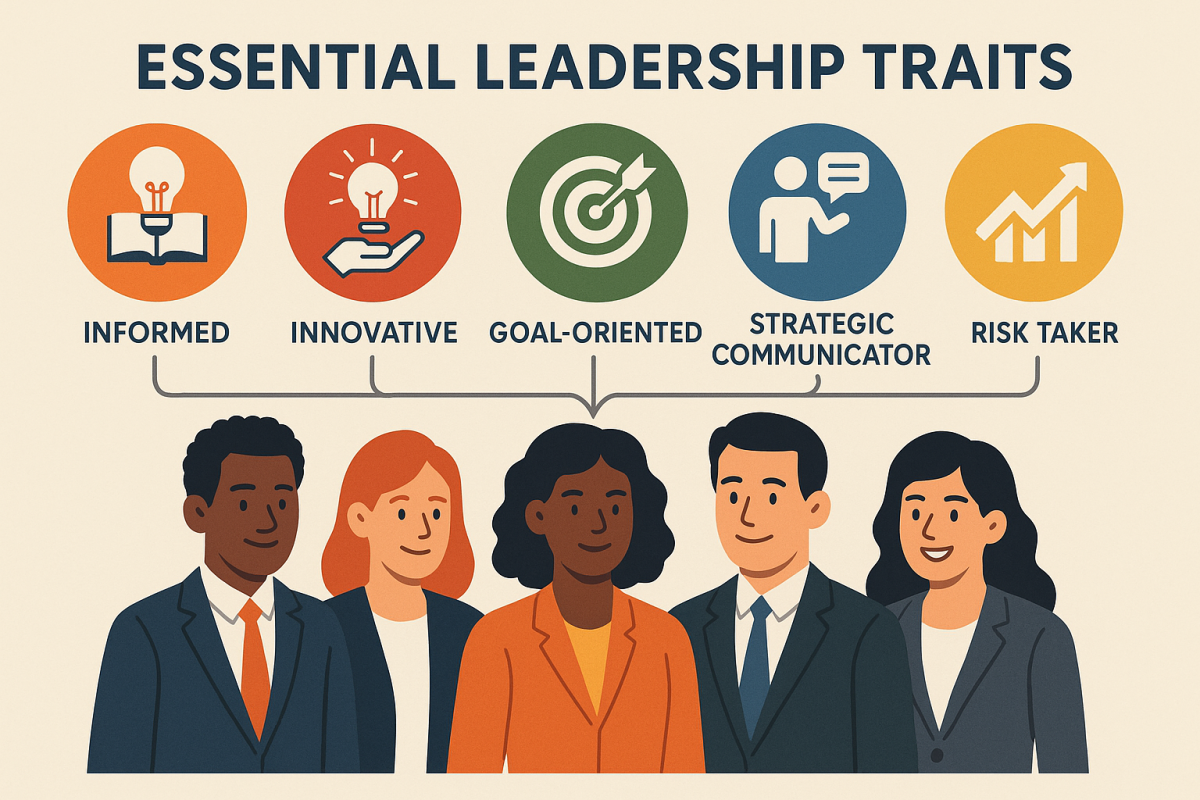Blog

The Five Enduring Characteristics of True Leaders
True leadership success isn’t about fleeting trends; it’s built on enduring characteristics. In addition, true leaders understand that modern leadership is a team sport. That’s why they surround themselves with other strong leaders who complement their strengths. By doing so, they create balanced leadership teams. While styles differ and evolve, the five foundational traits remain essential for navigating complexity, inspiring stakeholders and operationalizing teams:
- Informed: Effective leaders possess deep knowledge of their industry, market, organization, and team dynamics. They actively seek diverse, even contradictory information. These leaders make sound decisions based on mutual respect and the collective intelligence of their leadership teams.
- Example: A tech CEO pivots the company strategy towards cloud computing after thoroughly analyzing market data showing declining demand for on-premise software and rising cloud adoption rates, ensuring the move was data-driven, not just instinctive.
- Innovative: Leaders foster creativity and embrace new ideas to solve problems, improve processes, and seize opportunities. They challenge the status quo and encourage experimentation within their organizations. These leaders also ensure that it is safe to have disagreements and discussions so they get the best outcomes.
- Example: The founder of a retail chain, facing stiff online competition, innovates by creating a highly successful “buy online, pick up in-store with instant personal styling advice” model, blending digital convenience with unique in-person value.
- Goal Oriented: Successful leaders set clear, compelling visions and define measurable objectives. They align team efforts towards these goals and track progress relentlessly. The roadmap is clear, the outcome and output metrics are agreed and the necessary levels of enthusiasm and commitment are in place.
- Example: A non-profit director, aiming to reduce local homelessness by 25% in three years, sets specific quarterly milestones (e.g., secure X shelter beds, place Y individuals in jobs) and regularly reviews progress with the team, adjusting tactics as needed to stay on target.
- Strategic Communicator: They articulate vision, expectations, and complex ideas clearly and persuasively to diverse audiences (up, down, across, externally). They listen actively and tailor their message for maximum impact. They understand that clear communication is a function of clear thinking and audience segmentation. There is no one-size-fits-all when it comes to effective communication.
- Example: During a major organizational restructuring, a department head strategically communicates: explaining the “why” and future benefits to her team in an all-hands meeting. She provides detailed transition plans to managers, and highlights positive outcomes to skeptical executives in board reports. In addition, she maintains an open line of communication to fine tune and ensure consistency in the messaging.
- Risk Taker: Calculated risk-taking is essential for growth and adaptation. Successful leaders assess potential downsides, make informed decisions despite uncertainty. Additionally, they are willing to step outside their comfort zones. They are also willing to push back when fearful skeptics want to delay action beyond the window of opportunity the market offers.
- Example: A manufacturing plant manager, convinced by pilot results, takes the risk of investing a significant portion of the annual budget in unproven automation technology. This bold move ultimately doubles production efficiency and secures the plant’s long-term future, despite initial skepticism.
These characteristics – being Informed, Innovative, Goal Oriented, a Strategic Communicator, and a Calculated Risk Taker – are not revolutionary secrets. They are the timeless, interconnected foundations upon which enduring leadership success is consistently built, enabling leaders to navigate challenges, seize opportunities, engage their leadership teams and drive meaningful results.

